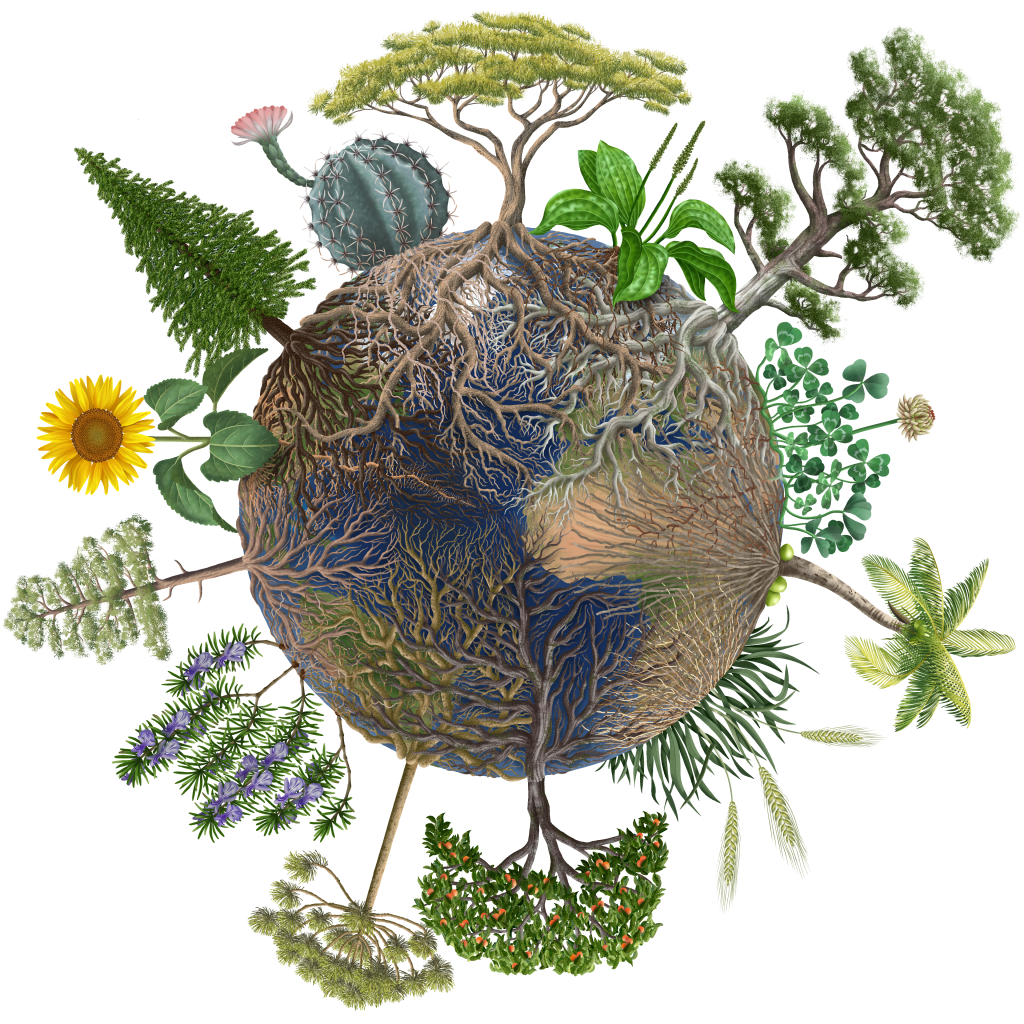TraitDivNet
TraitDivNet is an open global network of researchers interested in plant traits launched in March 2022.

The traits of plants (features like their height, the size of their seeds and leaves, or the thickness of their roots) characterize how they respond to environmental conditions, disturbances and interactions with other organisms, and how they affect ecosystem processes such as nutrient cycling or food production. Thereby the information about plant traits enable to get an overview about how plants respond and influence ecosystem processes. Still, the practical use of plant traits is hampered by the use of disparate traits between different studies, which are often measured inconsistently, and that mostly characterize aboveground plant parts. Recent research has revealed that belowground traits provide additional information about the functioning of the plant that is not captured by aboveground traits (Carmona et al. 2021). However, very few species have information for both above- and belowground traits (e.g. only ca. 0.1% of the species in the global flora could be included in Carmona et al. 2021), and this lack of information hampers the application of trait-based ecology at large scales.
TraitDivNet will:
- boost the number of plant species where both above- and belowground traits are characterized
- use standardized methods to measure plant traits
- focus on ten of the most informative plant traits
- target dominant plant species across habitats at global scale
- produce new insights into fundamental patterns of plant biology across the world's ecosystems
How to participate:
Contact us: Select a natural or semi-natural habitat where you can sample vascular plants in a 10 m x 10 m plot and contact the Steering Committee (traitdivnet@ut.ee) to confirm your participation and obtain a plot ID.
In the field:
- make some general observations (plot ID, coordinates, date, vegetation type, cover of vascular plant species, etc.)
- determine the 20 most abundant plant species for trait measurements: for each of the 5 most abundant species, 5 individuals will be measured, and for the next 15 most abundant species, 3 individuals will be measured (in total 70 individuals per plot)
- collect at least 3 leaves per individual plant for measuring leaf area, specific leaf area and leaf nitrogen content
- collect 50 cm of first-order roots from each selected individual for measuring specific root length, root diameter, root tissue density and nitrogen concentration
- measure vegetative height (using a ruler, telescopic stick or trigonometric methods)
- collect a piece of stem for measuring specific stem density
- collect at least 10 seeds per individual
- collect soil samples
In the lab:
- scan the leaves and roots on a flatbed scanner
- dry and weigh leaves, roots and seeds
- measure stem volume
- ship collected material to the coordinators
Download the sampling protocol with a list of materials needed for sampling and the datasheet file here.
TraitDivNet Steering Committee: Carlos P. Carmona, Kadri Koorem, Meelis Pärtel, Mari Moora, Guillermo Bueno, Javier Puy, and Enrico Tordoni